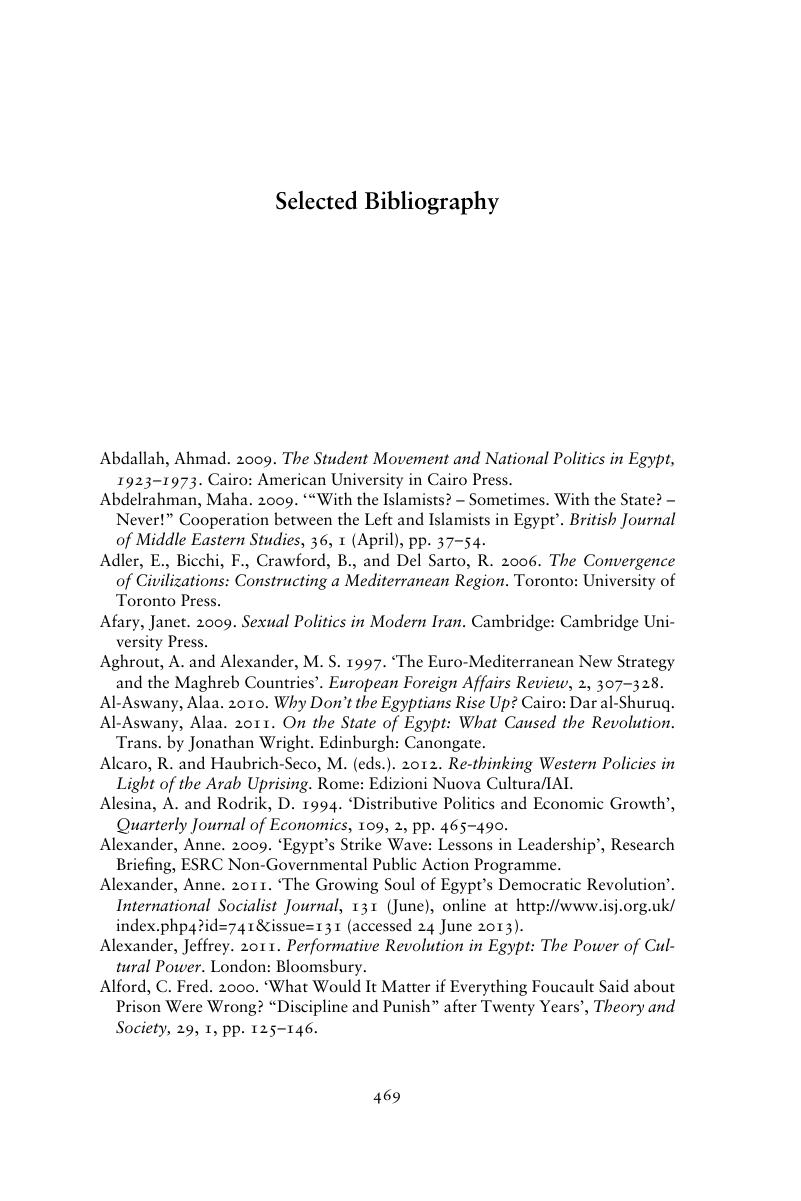Selected Bibliography
Published online by Cambridge University Press: 05 June 2014
Summary

- Type
- Chapter
- Information
- The New Middle EastProtest and Revolution in the Arab World, pp. 469 - 482Publisher: Cambridge University PressPrint publication year: 2013



